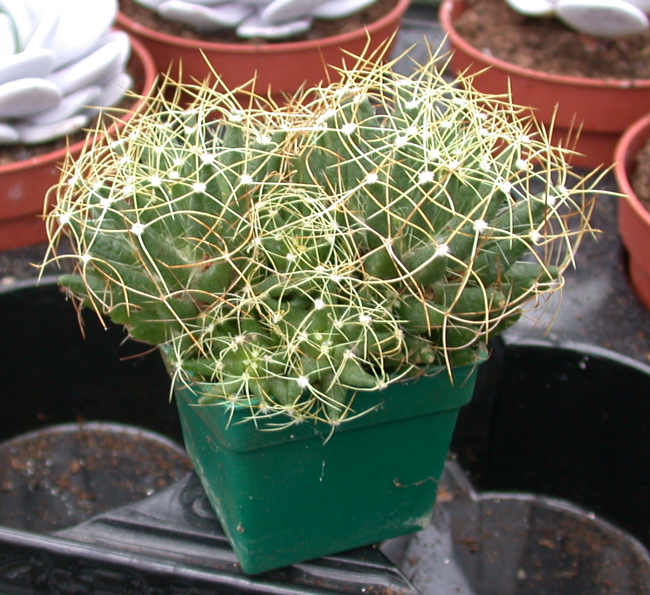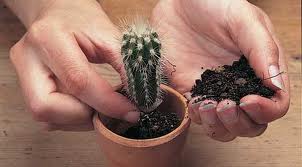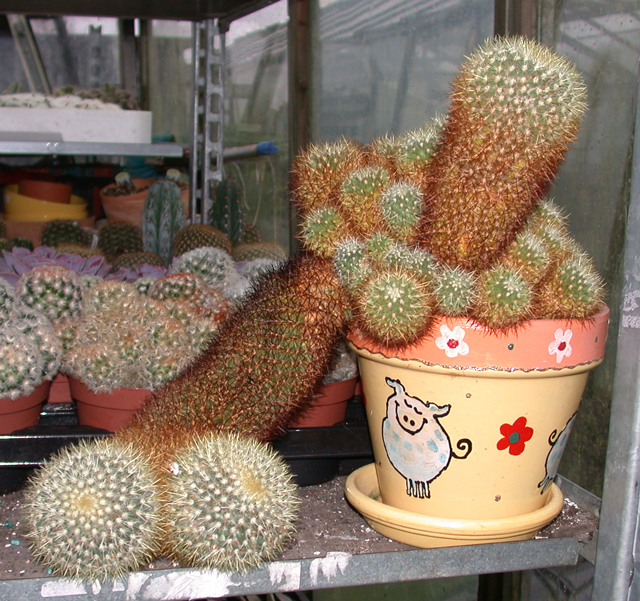When to re-pot?
Take a look at the cactus on the right. It's filling the (2") pot totally - the soil surface cannot be seen. Now is the time for a new pot - if you want your cactus to grow that is.
Of course, in the wild, this plant may well be growing in a crack between rocks, with even less soil than this. Who is going to repot it? The answer is that it will of course survive without re-potting at all, but it will be starved of nutrients and growth will slow right down.
|
 |
 Potting Cacti and Succulents
Potting Cacti and Succulents
